CD & Vinyl-2LP: Sonorama C-72/ L-72
BARNEY WILEN – MOSHI TOO
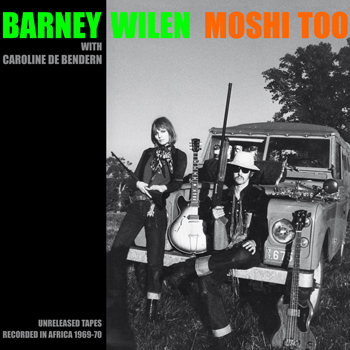
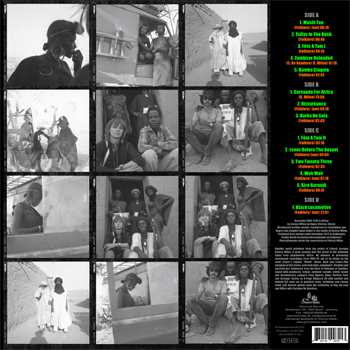
S 01
Track
Composer
Time
01
Moshi Too
Folklore
6:16
02
Fullys In The Bush
Folklore
0:46
03
Fête A Tam I
Folklore
4:15
04
Zombizar Reloaded
C. De Bendern/ B. Wilen
7:10
05
Bumba Ciagalo
Folklore
1:43
S 02
Track
Composer
Time
01
Serenade For Africa
B. Wilen
13:08
02
Disturbance
Folklore
4:16
03
Barka De Sala
Folklore
2:03
S 03
Track
Composer
Time
01
Fête A Tam II
Folklore
3:16
02
Leave Before The Gospel
Folklore
5:00
03
Two Twenty-Three
Folklore
2:35
04
Wah Wah
Folklore
7:18
05
Kira Burundi
Folklore
0:47
S 04
Track
Composer
Time
01
Black Locomotive
Folklore
21:01
Recorded 1969-1970 in Africa by Barney Wilen on Nagra (Stereo/ Mono).
Unreleased archive sounds, transferred on Telefunken and Nagra
from original tapes found in the estate of Barney Wilen.
Produced from January until November 2012 at Audiomoto Studio Berlin
by Roskow Kretschmann and Ekkehart Fleischhammer
under the supervision of Patrick Wilen,
with kind support from Mo and Jury Lutz.
Release Date: 25.01.2013
Unreleased archive sounds, transferred on Telefunken and Nagra
from original tapes found in the estate of Barney Wilen.
Produced from January until November 2012 at Audiomoto Studio Berlin
by Roskow Kretschmann and Ekkehart Fleischhammer
under the supervision of Patrick Wilen,
with kind support from Mo and Jury Lutz.
Release Date: 25.01.2013
MOSHI: trance utterance by the Fullani Bororogi (Niger). “MOSHI is the Bororogi`s way to get rid of the blues, a trance-like state which involves possession by a special demon called MOSHI” (CdB).
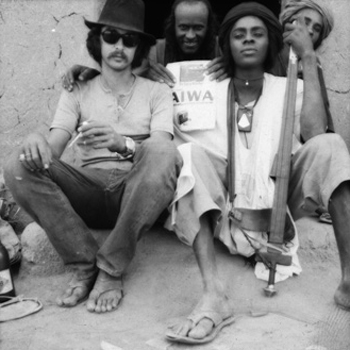
Almost all of these "original African recordings" are unreleased until today and now see the light of day under the title MOSHI TOO. Infected by Pharaoh Sanders and John Coltrane, enthusiastic about jazz-rock and the spontaneous free jazz scene, Barney plays psychedelic desert blues and spiritual Afro Jazz - hypnotic sessions with deep tenor saxophone, funk guitar, bass and drums in a trance-like flow. Occasionally, he works with backing tracks and noise or ambient sounds. In addition, there are documentary recordings of African music and singing groups, of various single traditional instruments such as the balafon, oud or flute and the rhythms and chants of nomadic tribes to the sounds of nature, Muslim prayers or voodoo voices.
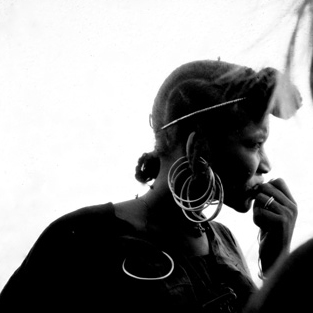
Excerpts from new sleeve notes by Caroline De Bendern (2012):
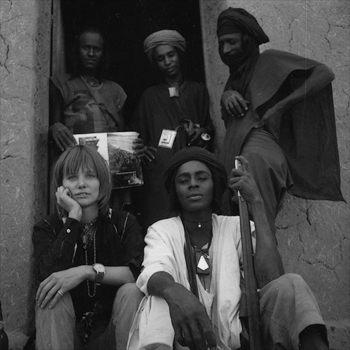
The journey was to last six months during which two films were to be shot. The voyage was originally motivated, on listening to a recording of pygmy music. A visit to these people was to be one of the highlights, among others. The production company which financed the expedition, “Les films Zanzibar”, was created in 1968 by a young “insoumise”, Sylvina Boissonnas, who had already produced several films by among others, Philippe Garrel and Serge Bard. In 1969, Sylvina agreed to Serge Bard’s Zanzibar project.
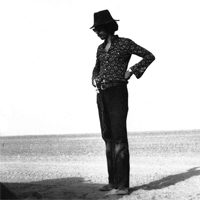
Next Algiers and the “Pan African Music Festival” where Barney got out the Nagra provided by the production for the first time, and recorded Archie Shepp with some Algerian musicians (Gnaoua) from the south, in front of the mosque at the entrance of the Kasbah. We continue on to Colomb Béchar, then we made excursions all around Tam, recorded Tin Hanan festival at Abalessa (Tindi Abalessa). At the border, we were searched and … busted. Some illicit substances were found and we’re all arrested. Sylvina sent two lawyers, who got us off with a fine and ordered to leave the country.
Then we are in Agadez, Niger. Settle into a house, which we rent from Malam Sidi, Grand Marabout. We would go on excursions into the bush. One of these led us to Tafadek, a paradise like place, where nomads from all around and even further, come to take the healing waters. Hot sulfur water springs out into a covered bath, in which one can dip and then go out and plunge into a cold pond outside. We had brought some of our friends from Agadez, “les grands bandits” and some pretty girls: Beautiful Budje, gorgeous Giana and others, the Bororo, among whom: knockout Orti and the sublime Giulde. It was in Tafadek that Barney recorded his MOSHI one night under a starry sky.
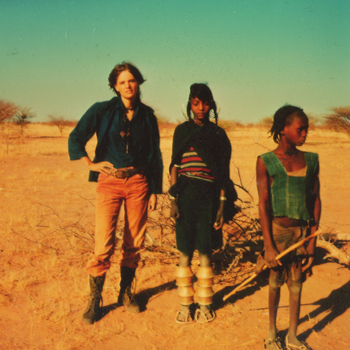
Stay over in Burkina Faso (“Balandji à Bobo”), then Bamako, record Oussman griot (“Bamako Koulikaro” ), purchase three balafons and some percussion instruments, which were played in a title of the album (“Sannu Ne Gheniyo”). Leave Dakar on ship with two Land Rovers and Boogie, a baby Senegalese dog. Back home, MOSHI is produced by Pierre Barouh. After a successful debut (press, television, concerts), Pierre Barouh terminated the promotion. The group split up. Just after recording MOSHI, whilst the album was being processed, Barney and I went back to Agadez to make a film (without Serge), “A L’intention de Mademoiselle Issoufou à Bilma”. (Caroline de Bendern, 2012) … find the full version of this text on the CD- and LP-Sleeve of MOSHI TOO ...
Big thanks to Patrick Wilen for making the tapes available and to Caroline De Bendern.
Sound restauration and mastering in 2012: Roskow Kretschmann at Audiomoto, thanks to Mo and Jury Lutz.
photos from the collection of Caroline De Bendern, frontcover concepted by Patrick Wilen, artwork for LP and CD by Patrick Haase, album conceived and produced for Sonorama Records by Ekkehart Fleischhammer.
